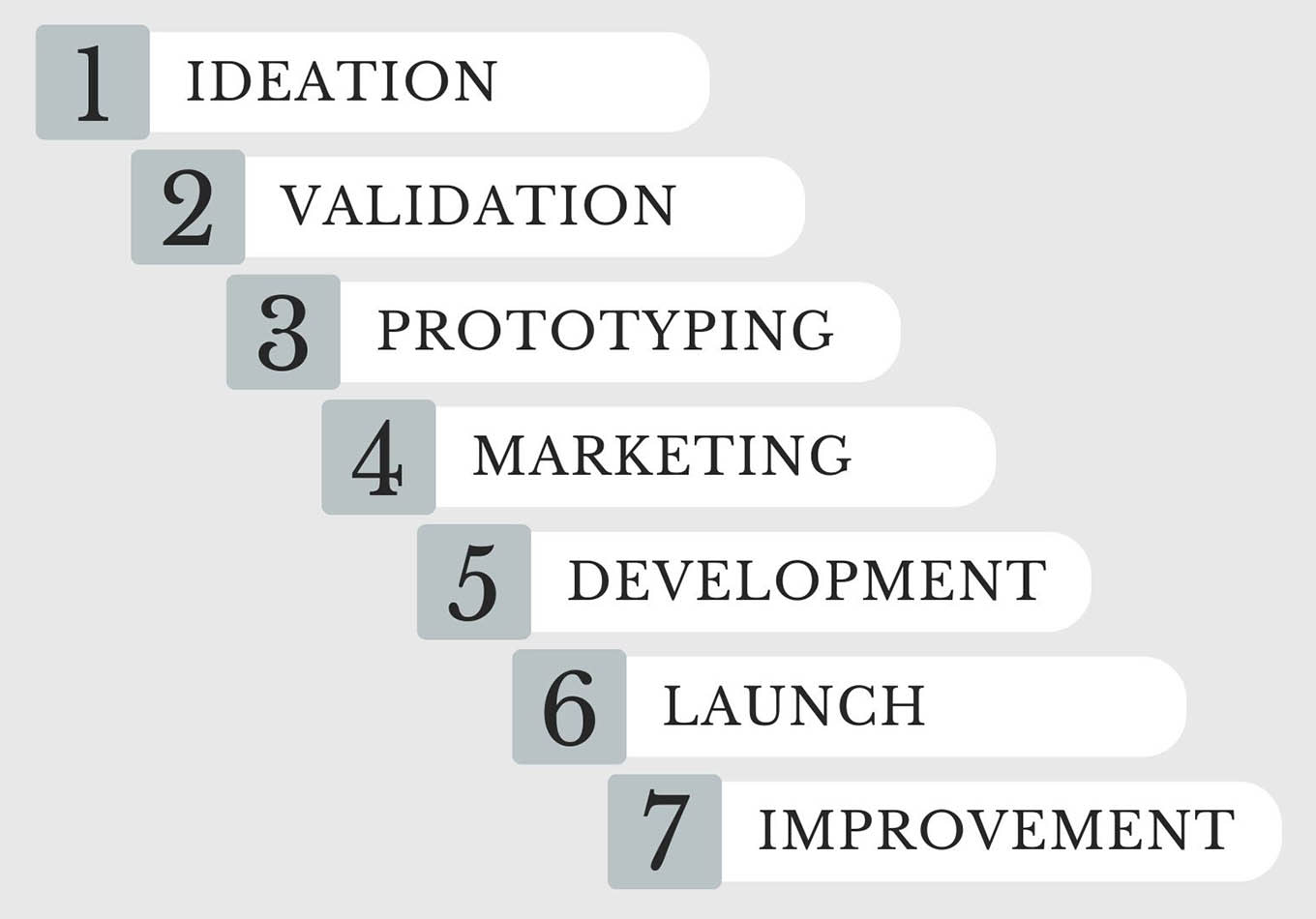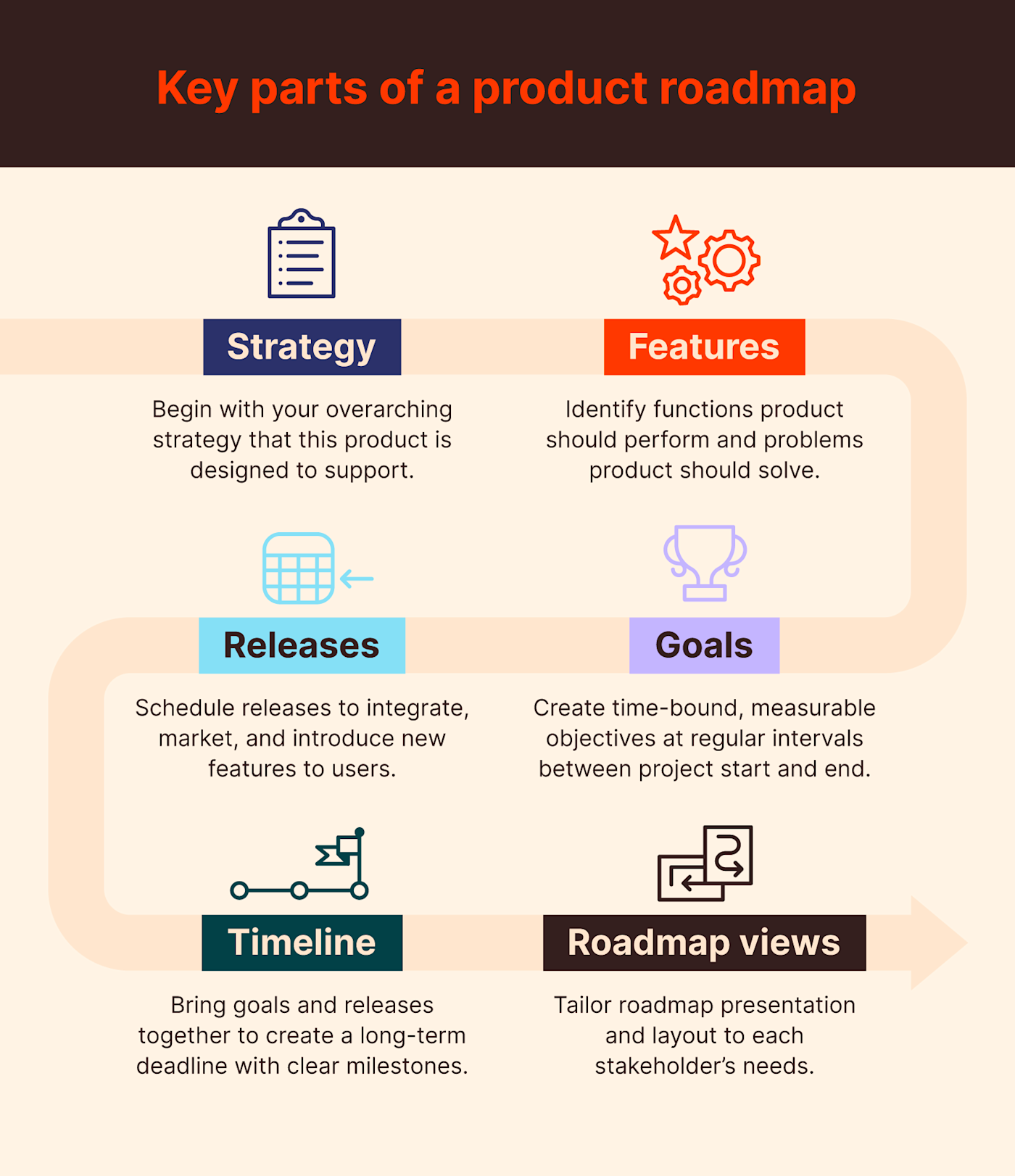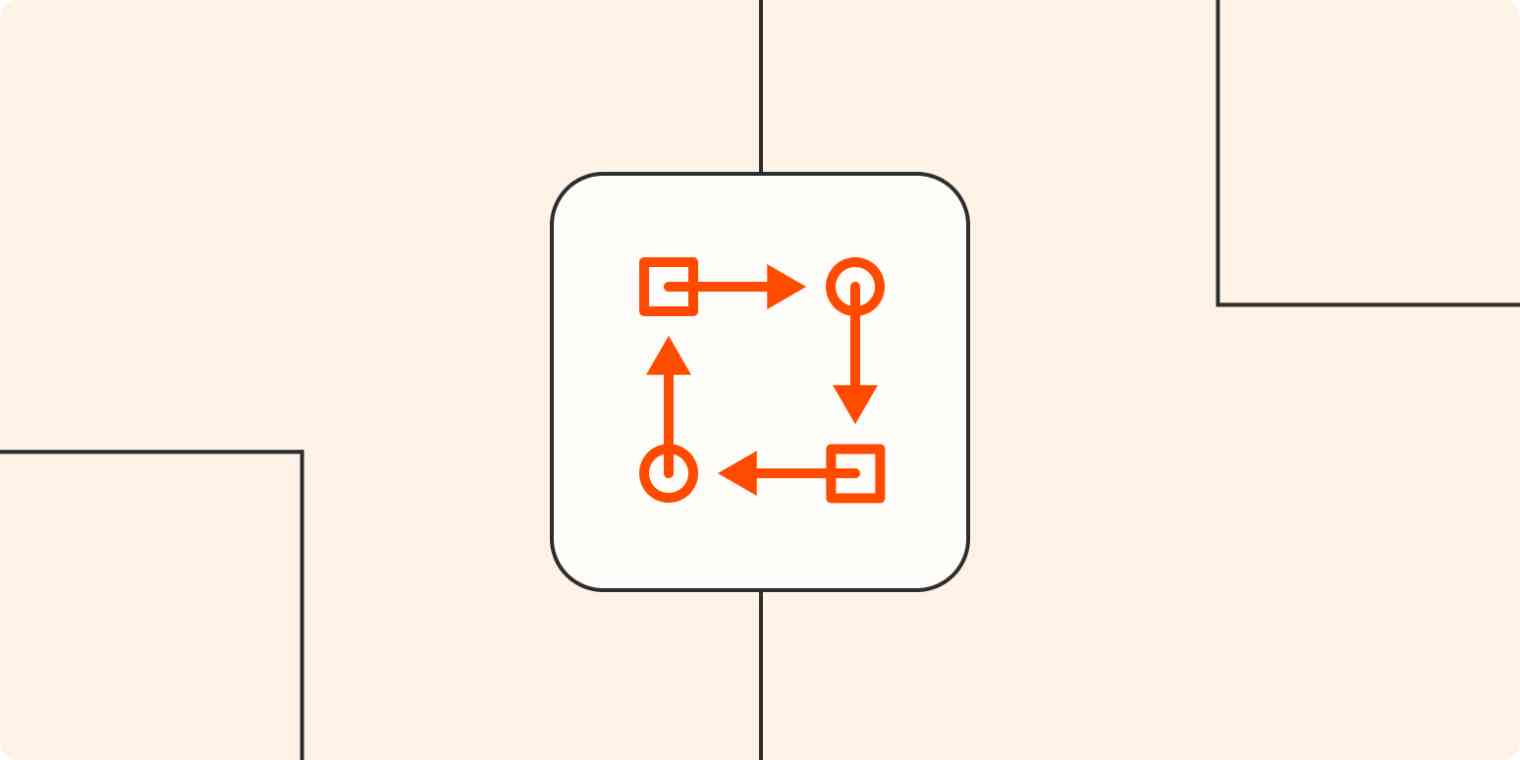Your products are what create interest and drive sales. They're what get customers to your site and keep them coming back. But taking an idea from inception to launch is a massive undertaking.
As an eCommerce brand owner, micro-SaaS provider, and website builder for The Money Maniac, I've personally worked through the product development life cycle a number of times. Each process is a bit different depending on the end product, but it follows the same series of steps no matter what—and that's what I'll be talking about here.
Zapier is the leader in workflow automation—integrating with 6,000+ apps from partners like Google, Salesforce, and Microsoft. Use interfaces, data tables, and logic to build secure, automated systems for your business-critical workflows across your organization's technology stack. Learn more.
Product life cycle vs. product development life cycle
Before I dive in, a quick clarification: the terms product life cycle and product development life cycle are often used interchangeably, but they actually refer to two different concepts.
What is a product life cycle?
The product life cycle attempts to describe the stages a product goes through from launch to discontinuation. The cycle typically contains four distinct phases:
Introduction: The product is new to the market
Growth: The product gains traction and grows in popularity
Maturity: The product reaches its peak market penetration
Decline: The product loses market share and is eventually discontinued
This framework is helpful for understanding the overall trajectory and market share of a product, but it tells us nothing about how the product is actually developed. For that, we need to explore the product development life cycle.
What is a product development life cycle?
The product development life cycle explains how new ideas are brought to the market. From concept to commercialization, it guides aspiring builders through the process of product development in a way that's intended to reduce risk and maximize the odds of finding traction. In relation to the product life cycle, it's like a prequel to the introduction phase.
What are the product development life cycle stages?
There are a few different ways to categorize the steps in the product development life cycle. What's most important, however, is to lead a lean, user-driven operation. That way, you can deliver a minimum viable product (MVP), gather customer feedback, and generate revenue as quickly as possible.
With that, here's how I break down the seven key stages of the product development life cycle.

1. Ideation
The first step in the product development life cycle is ideation, or generating new ideas. The goal here is to brainstorm a list of problems that need to be solved or opportunities that can be seized. This has always been the most challenging phase for me personally, so I've turned to strategies and frameworks to jumpstart the process.
The best piece of advice I can give is to refrain from judging the feasibility of your ideas at this stage: simply let the creativity flow. One idea can lead to another, so it's important to write everything down and get comfortable remixing and iterating later on.
One simple way to begin surfacing opportunities is the SCAMPER method. This technique is designed to help you think outside the box by re-imagining existing products and services in new ways. The acronym instructs entrepreneurs to Substitute, Combine, Adapt, Modify, Put to other use, Eliminate, or Reverse each element of a given product.
For example, you could adapt existing solutions, put them to use in other markets, or combine two features of different products to create something entirely new.
Ideation can also be done through market research, competitor analysis, or simply listening to existing customers. Look for shifts in customer behavior, unmet needs, or new technologies that could be leveraged to create a competitive advantage.
2. Validation
Validation determines which ideas are worth pursuing and which should be scrapped. Use online surveys, interviews, focus groups, or A/B tests to assess whether there's a market for the potential products on your list. Based on these initial insights, narrow your focus to a select few ideas with the most promise.
Next, speak with potential customers to get a better understanding of their needs and how your product could meet them. Try to gauge how much they'd be willing to pay for a solution, their likelihood of using it, and what features are most important to them.
Unfortunately, I've often found that market research can be positively skewed. Prospects may want to show their support, or simply not have the heart to share criticism. In this case, you risk falling victim to the intention-behavior gap, or the discrepancy between what people say they'll do and what they'll actually do.
To avoid this issue, I always wrap up the validation stage by trying to pre-sell the product. If any hesitation or concerns are voiced, I use this as an opportunity to collect even more candid feedback. And if takers are too hard to come by, that's usually a sign that the demand simply isn't there.
3. Prototyping
Once you've settled on a product idea, it's time to build a prototype. First, determine the key features and functions that need to be included. These will be the foundation of your product at launch and should be based on the feedback you received during validation.
Next, create a mockup or working model of the product using wireframing tools like Figma or Sketch. This will help you visualize how the final product will look, feel, and function. Start by sketching out each screen or interface, then add buttons, links, and other elements of interactivity.
Once again, I like to take this opportunity to gather feedback from potential customers. I'll ask open questions about the design and expected functionality of the product. If testers can navigate the prototype easily and understand how it will work, that gives me the confidence I need to invest in the next steps. Or if I find the process requires a lot of leading and explanation, I may go back to the drawing board to simplify the user experience.
4. Marketing
With your prototype complete, begin fleshing out your go-to-market strategy. Identify your target audience and create buyer personas. Determine potential competitors and formulate your product's unique value proposition.
Use these insights to inform a branding strategy, and start putting together marketing materials. If you already have an established business, consider teasing the new product line on existing channels like social media and email.
To do this effectively, I like to pull language directly from previous user interviews. If I met with the right people during validation, their verbiage should speak to the specific needs and pain points of other prospects in that market.
Next, decide which channels you will use to fill your sales funnel. This may include paid advertising, social media, blogging, or even word-of-mouth. Consider what mix of channels is best suited for your product type, and establish key performance indicators (KPIs) for each. For example, you might track leads generated by paid ads, clicks from your SEO efforts, or newsletter signups from your blog.
5. Development
As your marketing campaigns come together, kick off the development of your minimum viable product (MVP). Remember that the solution doesn't need to be full-featured from day one. The goal is to get to the market as quickly as possible to start learning from actual users.
For this reason, the completed prototype should provide enough detail for you or your engineering team to start building the product. As a non-technical founder, I try to set a target deadline for the MVP launch and break down the project into smaller, more manageable tasks. This helps me to track progress and ensure that the development process is on schedule.

As the development team or agency begins to bring the product to life, I create a product roadmap for any functionality that didn't make the initial cut. Generally, I prioritize the future improvements in this document according to the Pareto principle, or 80/20 rule. This means that I focus on the 20% of improvements (or the improvements that will take 20% of the effort) but will have the biggest impact on user experience.
6. Launch
In the weeks leading up to the launch, make sure everything is in place and running smoothly. On the product front, this includes finalizing integrations, setting up billing, and implementing user tracking and analytics. Even though I'm not involved in the development, I always spend a lot of time performing first-hand tests. I explore every nook and cranny of the product, testing multiple devices, browsers, corner cases, and user flows.
At the same time, finalize your marketing efforts. Schedule press announcements, plan a launch event, post on Product Hunt, and make a splash on social media.
When the time finally comes, take a deep breath and go live. Enjoy the buzz, the excitement, and the sense of accomplishment that comes with launching a new product.
Then, take a step back and watch how everything performs. Gauge market interest, track usage, and pay close attention to who signs up. Analyze how users interact with the product, what features they seem to like, and where there may be room for improvement. Launch day should be invigorating, but it's only the beginning: the seventh and final stage of the product development life cycle never really ends.
7. Improvement
Product development is an ongoing journey, not a destination. Fortunately, if your launch went well, you should have just gathered your most valuable feedback yet. As users continue to interact with your product, take note of their behavior and use this data to inform your next steps.
At this stage, I often find myself adjusting the product roadmap. I may tweak existing features, add new ones, or make improvements that will drive customer lifetime value. To the extent possible, I even try to revisit steps one through six to ensure that each update delights users.
As another source of product data, I recommend gathering customer feedback directly. Send NPS surveys to existing clients and add a churn survey to your cancellation flow. These insights will help you further understand why people are using (or not using) your product and what changes need to be made to improve the experience.
Turning an idea into a tangible, marketable reality requires careful planning and execution at every turn. The product development life cycle is a continuous process of research, implementation, and improvement. By understanding each stage and its objectives, you can take a product from idea to launch and beyond.
Of course, no two products and no two teams are exactly alike. And as you move through each stage of development, you may find that your process looks a little different than what I outlined here. The most important thing is to stay flexible, adapt to feedback, and keep your eye on the prize: delivering value to your customers. Good luck!
This was a guest post by Daniel Anderson, a marketing expert who writes about entrepreneurship, business, and personal finance. Learn how to launch a side hustle, scale through digital marketing, and plan for financial freedom with his step-by-step guides at TheMoneyManiac.com. Want to see your work on the Zapier blog? Read our guidelines, and get in touch.






